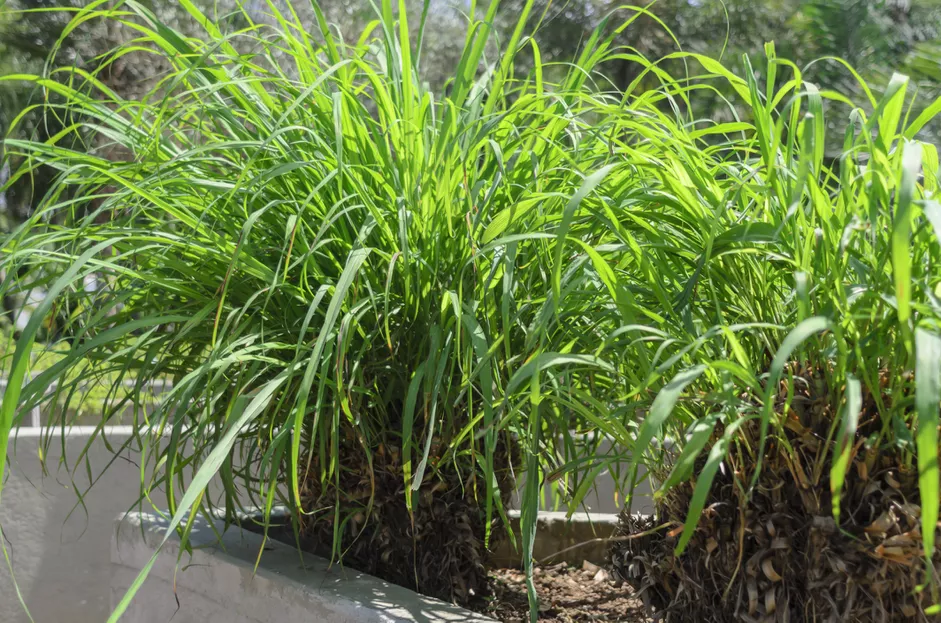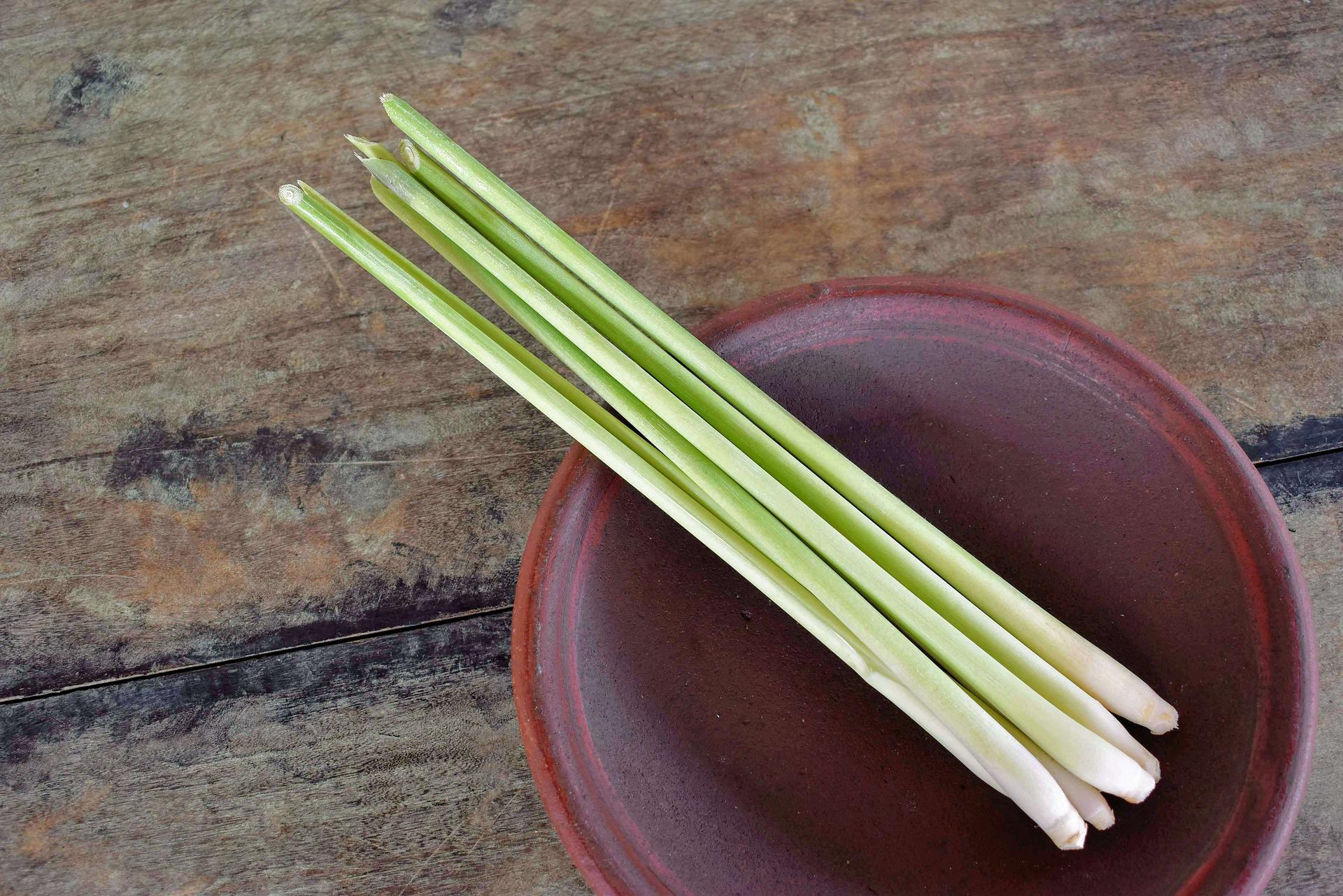Cymbopogon nardus, often known as citronella grass, is a native grass of Sri Lanka and a significant producer of the essential oil citronella. This powerful oil is extracted through the labor-intensive steam distillation technique. It is sought after for its capacity to ward off mosquitoes. However, you don’t need to distill it to get the bug-repelling effects. If you live in USDA growth zones 9 or 10, you can grow citronella grass in your backyard. Grow this grass as an annual or in a pot that you may bring indoors to overwinter if your temperature is cooler.
Citronella is a tall, quickly expanding grass that releases a distinct citrus aroma when crushed. It repels mosquitoes and other insects. Citronella grass serves as an excellent aesthetic in addition to deterring bothersome insects that could ruin your backyard barbecue. This plant can develop into a big focal piece up to 6 feet tall and 4 feet broad. Lance-shaped grass blades and light brown, spiky flowers are features of citronella, which blooms from summer through fall.
Citronella grass
Citronella grass, also known as Cymbopogon nardus and Cymbopogon winterianus, is a clump-forming perennial aromatic grass indigenous to Asian nations like Sri Lanka India, Burma, and Indonesia.
Citronella oil is the essential oil obtained from the citronella plant’s aerial sections. It is frequently used to ward off insects. Because of its antibacterial qualities, it is also found in candles, soaps, and cleaning products.
Citronella vs lemongrass
Lemongrass (Cymbopogon citratus) and citronella grass (Cymbopogon nardus) are frequently mistaken. Despite having a similar appearance, it’s vital to tell these two ornamental kinds of grass apart since lemongrass is edible, but citronella grass isn’t. Only citronella will work if you want to keep mosquitoes at bay.
Look at the color of the foliage to determine whether a plant is a lemongrass or citronella grass. There are no other colors at all in the lemongrass. Contrarily, citronella grass has reddish-tinted pseudo-stems and overlapping leaves that create a stem-like base.
Planting citronella
Citronella grass is only perennial in warm climates since its hardiness limit is 32 F. This grass requires a lot of water and sunlight regardless of where you live and whether you plant it in the ground or a pot. To stop the growth of undesirable seedlings in the garden, you might choose to remove the seed heads after flowering if you decide to plant outdoors.

Light
The most fantastic places for citronella grass to flourish are sunny climates with afternoon shade. The vegetation might burn from too much direct sunlight.
Soil
The secret to cultivating healthy citronella grass is a well-draining soil. Since this plant requires a lot of water, having soil that drains effectively will help avoid issues like root rot. Although it grows best in moist, loamy soil, this grass is highly adaptable to other soil types. It may thrive in a range of environments.
Water
Citronella grass requires a lot of watering because it is native to humid climates with regular rains. Depending on the conditions, you might need to water your lawn daily.
For instance, keeping your citronella grass indoors in a container will result in reduced humidity levels and less soil from which your plant can absorb moisture. You will need to water daily in this scenario. You won’t need to water as frequently if your grass is planted outside in a humid atmosphere. As a result, the amount of rainfall and the environment’s humidity levels will affect how often you should water your plants.
Humidity and temperature
In USDA hardiness zones 10 to 12, citronella grass can be grown as a perennial; however, many people plant it as an annual in other zones. Citronella grass, however, cannot endure the extreme cold for an extended period. It cannot survive temperatures lower than 32 F.
Try keeping your citronella grass in a pot and bringing it inside before the first frost if you want to keep it alive but reside in a region with long, cold winters. Place the freshly cut grass 3 inches or less above the soil line in a sunny area or under grow lights. Your plant can overwinter inside your cozy house, where it will grow large and gorgeous by the time spring arrives. Citronella grass enjoys wetness and does best in damp environments.
Fertilizer
For citronella grass, a nitrogen-rich fertilizer is ideal. For the most excellent results and to promote healthy development, fertilize in the spring since it only requires it once a year.
Propagating
Citronella grass grows in clumps, so the best and simplest approach to multiply this plant is to divide it in the spring:
- Cut through the plant and its root system where you want to split it with a sharp shovel or spade.
- Move the separated plant’s roots gradually away from the parent plant.
- Where necessary, add soil to the parent plant.
- Change the placement of your divided citronella grass, and give it regular waterings.
Potting and repotting
Growing citronella grass in a pot makes it simple to move the plant as needed or bring it indoors during the colder months.
Even young plants require a sizable container due to the citronella grass’s incredible size and fast growth. You should typically start your citronella grass in a gallon-sized container, depending on the size of the plant you buy.
Make sure your pot includes a drainage hole to avoid excessive water retention. Place your potted grass in a spot that gets some afternoon shade and is sunny. Potted plants require frequent watering, so be sure to water them frequently.
It’s time to repot the citronella grass when you discover it has outgrown its current location over time. To do this, tip the pot on its side and slowly remove the grass. With a hand spade, you can break up the soil around the edges, but be careful not to pull on the foliage, which will shatter. After releasing the plant, repot it in a larger container with good potting soil and give it some water.
Citronella oil
A naturally occurring insect and animal repellant, citronella oil is extracted from two types of grass. It is yellow to brown and smells floral or grassy. Numerous ingredients make up the citronella oil. By grass variety, the precise makeup changes. However, citronellol, citronellal, and geraniol make up most of the mixture. Citronella oil is frequently used as a flavor in foods and beverages. The Food and Drug Administration has designated it as a food additive that is Generally Recognized as Safe (GRAS).
The United States first registered citronella oil in 1948. It is presently on American soil. According to the Environmental Protection Agency (U.S. EPA), pesticides have the least risk.
Benefits of citronella oil
Citronella has been utilized for several reasons for ages. Here are some of the benefits of using citronella oil.
Insect repellent
For citronella to work as a mosquito repellent, you must reapply it frequently. It could offer protection for up to three hours if mixed with vanillin. According to studies, it is less effective than DEET at repelling mosquitoes.
Antifungal agent
It appears that citronella oil has potent antifungal properties. In some circumstances, daily reapplication may be necessary to keep fungal infections under control.
Although it possesses antibacterial characteristics, it is not as powerful as some other essential oils at eliminating a wide variety of bacteria and germs.
Wound healing
The antifungal and anti-inflammatory characteristics of citronella oil may aid in accelerating wound healing. More research on humans is necessary to ascertain its efficacy, as much hasn’t been done in this field.
Physiological effects of inhalation
The effects of breathing in citronella, lavender, and rosemary essential oils were examined in a 2001 study. Researchers discovered that rosemary stimulates the brain while lavender has a calming impact. Contrarily, citronella produced a more nuanced in-between result. According to the authors, each person may experience citronella’s effects differently.

How to use citronella oil
The uses for citronella oil are numerous. Here are a few ideas.
Spray
An insect repellent spray can freshen up a space or apply directly to your skin. Here’s how you can make a spray with citronella oil:
- Fill a glass spray bottle with water and citronella oil. It is suggested to have 10 to 15 drops of essential oil for each ounce of water.
- Essential oils don’t dissolve in water. Therefore this step is optional. Think about using a dispersion agent like soluble in your solution.
- Before spraying, give the bottle a good shake.
You will need to reapply citronella oil more frequently if you’re using it as an insect repellent because it has a shorter duration of efficacy than repellents like DEET.
Diffuser
To spread a scent over a space, use a diffuser. You might want to employ this technique, like the spray application, to deter insects or impart a pleasing aroma to a room.
Typical diffusers include a specific set of instructions. Ensure you carefully follow the package directions if you want to use citronella oil in a diffuser safely.
Massage oils and creams
You can also add citronella oil to oils and lotions for topical uses. Applying citronella oil may aid fungus and germ control on the skin and wound healing.
Before applying essential oils to the skin, always dilute them in a carrier oil.
Here’s how to prepare a massage oil or lotion using citronella.
How to prepare massage oil:
- Citronella oil should be diluted with a carrier oil, such as jojoba or coconut oil.
- For a 2.5 percent dilution, it is advised to use 15 drops of essential oil per ounce of carrier oil.
- You might want to use a one percent solution if you have sensitive skin (6 drops per ounce of carrier oil).
Cream or lotion preparation:
- Dilute citronella oil in an unscented cream or lotion.
- A 0.5 to 1 percent dilution is recommended for sensitive skin and a 1 to 2.5 percent dilution for normal skin (6 to 15 drops per ounce) (3 to 6 drops per ounce).
Safety tips
To use citronella oil safely, abide by the following recommendations:
- Always carefully dilute citronella oil before usage. Never apply citronella oil to your skin undiluted.
- Because they are so potent, essential oils can be dangerous to eat. Keep pets and children away from citronella oil.
- Avoid ingesting citronella oil.
- Always use citronella oil in a well-ventilated area as aromatherapy. Think about any children or animals that may be breathing in the aromatherapy. Certain essential oils might be harmful.
- Before using citronella oil, see your doctor if you’re pregnant, nursing, or taking any prescription drugs.
Are there any side effects?
Citronella oil may irritate or trigger allergies in certain people. The area may then develop redness, blotchiness, itchiness, or swelling.
Before applying citronella oil topically, test a small area of your skin with some diluted citronella oil. Avoid using citronella oil or items that contain it if you experience a reaction.
Although citronella oil hasn’t been linked to anaphylaxis, a severe allergic reaction, it’s still wise to be aware of the symptoms because it’s a medical emergency. Watch out for:
- difficulty breathing
- wheezing or coughing
- swollen throat
- red rash
- tightness in the chest
- nausea
- diarrhea
Sources:
- https://traditionalgardening.com/citronella-grass-vs-lemongrass/
- https://bestbeebrothers.com/blogs/blog/lemongrass-vs-citronella-what-fights-mosquitoes-the-best
- https://www.gardeningchannel.com/citronella-grass-vs-lemongrass/
- http://npic.orst.edu/factsheets/citronellagen.html
- https://www.thespruce.com/citronella-grass-plant-profile-5119502
- https://www.healthline.com/health/citronella-oil















